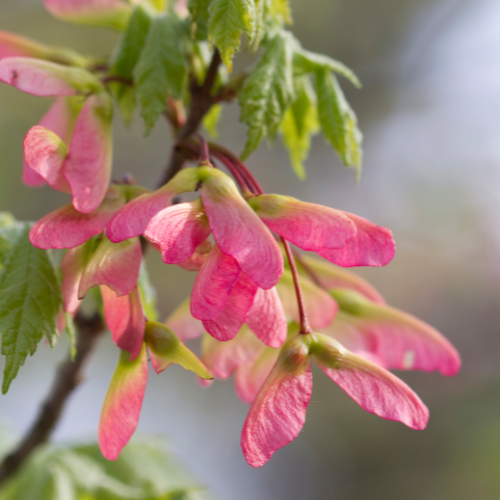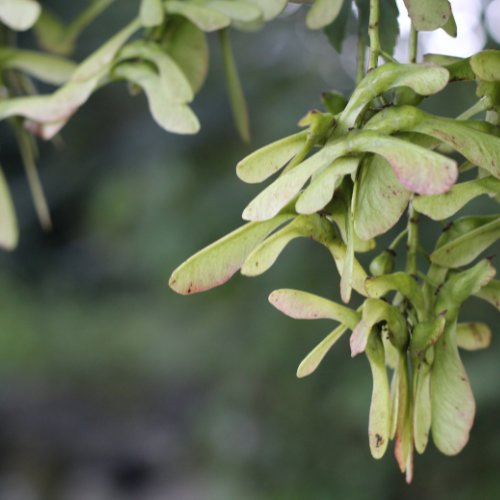Sycamore trees, famously known for their helicopter-shaped seeds are commonly found in parks and gardens almost everywhere. However, a lot of people do not know if these trees contain a toxin known as Hypoglycin A (HGA).

Sycamore Seeds a known for being extremely poisonous to horses, causing high fatality rates. But it’s said that they are also poisonous to other animals including dogs. The reason sycamore poisoning is commonly only really an issue to horses and not dogs is that horses eat various foliage like grass and hay which sometimes contains sycamore seeds. Dogs on the other hand are extremely unlike to be in a position where they will consume sycamore seeds.
As stated on the RSPCA website, if you believe your dog to have consumed sycamore seeds you should seek veterinary care as soon as possible.
Symptoms of Sycamore Seed Poisoning in Dogs
The poison Hypoglycin A (HGA) found in sycamore trees can cause muscle damage and lead to a range of symptoms in dogs. If a dog ingests sycamore seeds or leaves, it may exhibit the following symptoms:
- Depression
- Low head carriage
- Colic (still wanting to eat)
- Muscle weakness
- Brown or dark red urine
- Heart problems
If you notice any of these symptoms in your dog after it has been near sycamore trees, it is crucial to contact a veterinarian immediately.
Mortality Rates for Sycamore Seed Poisoning
Sycamore seed poisoning can be fatal in some cases, with mortality rates reaching up to 75%, even with early and proper treatment. This is because the amount of HGA ingested can be highly toxic and cause irreparable damage to the dog’s organs.
Treatment for Sycamore Seed Poisoning
If you suspect your dog has been poisoned by sycamore seeds or leaves, take it to a veterinarian immediately. There is no specific antidote for HGA poisoning, but early intervention can help prevent further damage to the dog’s organs.

The treatment for sycamore seed poisoning typically involves fluid therapy, anti-inflammatory drugs, and supportive care to help the dog recover. However, it is essential to remember that even with proper treatment, the prognosis for a dog poisoned by sycamore seeds is not always positive.
Preventing Sycamore Seed Poisoning in Dogs
Prevention is the key to protecting your dog from sycamore seed poisoning. The following measures can help reduce the risk of your dog being exposed to sycamore seeds or leaves:
- Keep your dog away from sycamore trees
- Avoid walking your dog in areas where sycamore trees are abundant
- Ensure that your dog does not eat any parts of the sycamore tree, including the leaves and seeds
- Train your dog not to pick up or eat anything from the ground during walks
- If you have a sycamore tree on your property, ensure that the seeds and leaves are regularly cleaned up to reduce the risk of your dog ingesting them accidentally.
New Test for Hga
A new test is now available to detect the presence of Hypoglycin A (HGA) in a blood sample. The test is available at the Equine Neuromuscular Lab at the Royal Veterinary College. However, the test is not a reliable indicator of risk, as variable amounts of HGA can be found at different times in different parts of the tree. Nonetheless, a blood sample can be useful in diagnosing sycamore seed poisoning in dogs.
- Why Are Dogs So Greedy? [Behavior Explained]
- Is Simpson Stopper Poisonous to Dogs? [Myrcianthes Fragrans]
- Are Beauty Berries Poisonous to Dogs? [Guide]
- Are Snowberries Poisonous to Dogs? [Completed Guide]
Conclusion
Sycamore seeds and leaves contain the poison Hypoglycin A (HGA), which can cause muscle damage and lead to fatal consequences in dogs. Pet owners should take steps to prevent their dogs from coming into contact with sycamore trees, including avoiding areas where the trees are abundant and training their dogs not to eat anything from the ground. If you suspect that your dog has been poisoned by sycamore seeds, it is essential to seek veterinary help immediately to minimize the damage.

Doctor of Veterinary Medicine (D.V.M.) at Nation Taiwan University,Master of Science (M.S.) in Biomedical Engineering at National Taiwan University of Science and Technology




